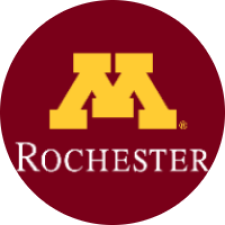
111 South Broadway, Suite 300
Rochester, MN 55904
United States
About
Cost
This is the average annual amount that first-time, full-time undergraduate students pay at this institution after subtracting all grants and scholarships from the cost of attendance.
Show Net Price details
This net price data shows the average amount students have paid, according to their family income, after subtracting all grants and scholarships.
College Profile
Show Undergraduate Student Body details
Student Success
Show Graduation Rate 4-yr Institution details
Show Retention Rate details
Campus Settings
Financial Aid
The following information pertains to first-time full-time undergraduate students.
Show Financial Aid details
Cumulative Debt
This section shows the median debt graduates incurred to complete their degree at this institution.
- Bachelor's Degree: $23,007
- Bachelor's Degree: 69%
Admission Information
- Common applications (online)
- System applications (online)
- School applications (online)
- The ACT or SAT is optional for Fall 2024.
- High School Diploma or GED
- Transcripts
- Essay required for scholarship consideration. * Interview required for early assurance programs.
- Accepts dual credits
- Accepts exam-based credits
Rolling Admissions Deadline
Until the enrollment capacity is filled or the school year begins
Financial Aid Application Deadline
The preferred deadline for FAFSA submission is December 1st, which is the only form a student must complete.

